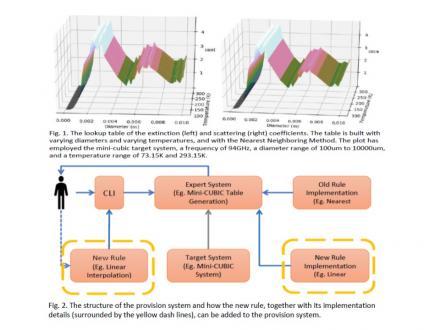Intern Student: Jingjing Nie
Mentors: Dr. Noppasin Niamsuwan (JPL) / Dr. Yu Gu (UCLA)
In the field of Earth observations, as a large number of datasets are collected and analyzed, the data analysis and evaluation work have become increasingly important. As a result, the forward simulation tools, due to their capabilities of evaluating the Earth observation datasets, are widely used for Earth remote sensing instruments. One of the simulation tools that is involved in this project is called Nasa Earth Observing System Simulator Suite (NEOS3), which, unlike the previous simulation tools, is capable of providing simulation for complex observations (Niamsuwan, 2014). There are three stages for NEOS3 to process the data, which are Geophysics, Electromagnetics, and Instruments. Through these three stages, NEOS3 can then provide a necessary and consistent framework to convert the model simulations to satellite observations. Thus, NEOS3 can be applied both to evaluate model simulations, and to determine which radar characteristics will be sufficient enough to observe the atmosphere based on different accuracy level requirements. Nevertheless, as the applications usually require a lot of repetitive forward simulation process, each of which might take a relatively long time, the whole process can be tedious and time-consuming. Consequently, the desire for speed and convenience has led to the need for an automated system to monitor and control the simulations. This system, called Provision, will utilize an expert system to emulate the decision-making process done by human experts, and provide the user with the desired table generated, or the answer for the optimal parameter choice based on different accuracy levels.
There are three major objectives for this project. The first one is to build an interface to communicate with target systems, such as NEOS3, Cubic, or mini-Cubic. Secondly, using both the knowledge base and decision-making algorithms, the expert system is to be built. Lastly, this project will aim to also populate the knowledge base using the information from human experts. By implementing the three relevant modules, the provision system can not only build the mini-CUBIC lookup table from the mini-CUBIC target system, but also connect and communicate with the NEOS3 system. Therefore, it can automatically generate the able or automatically search for the ideal beam width value, both of which can greatly lessen the tedious manual work and increase the speed.
